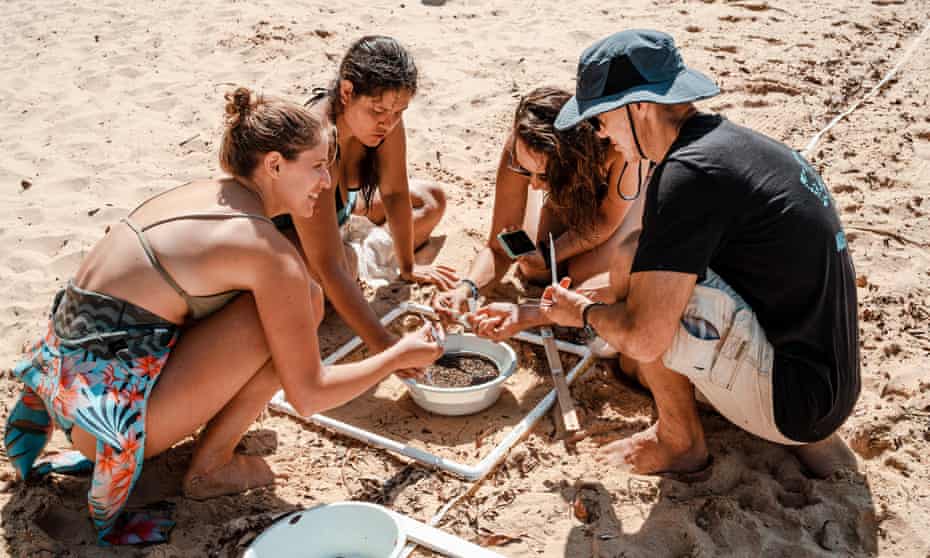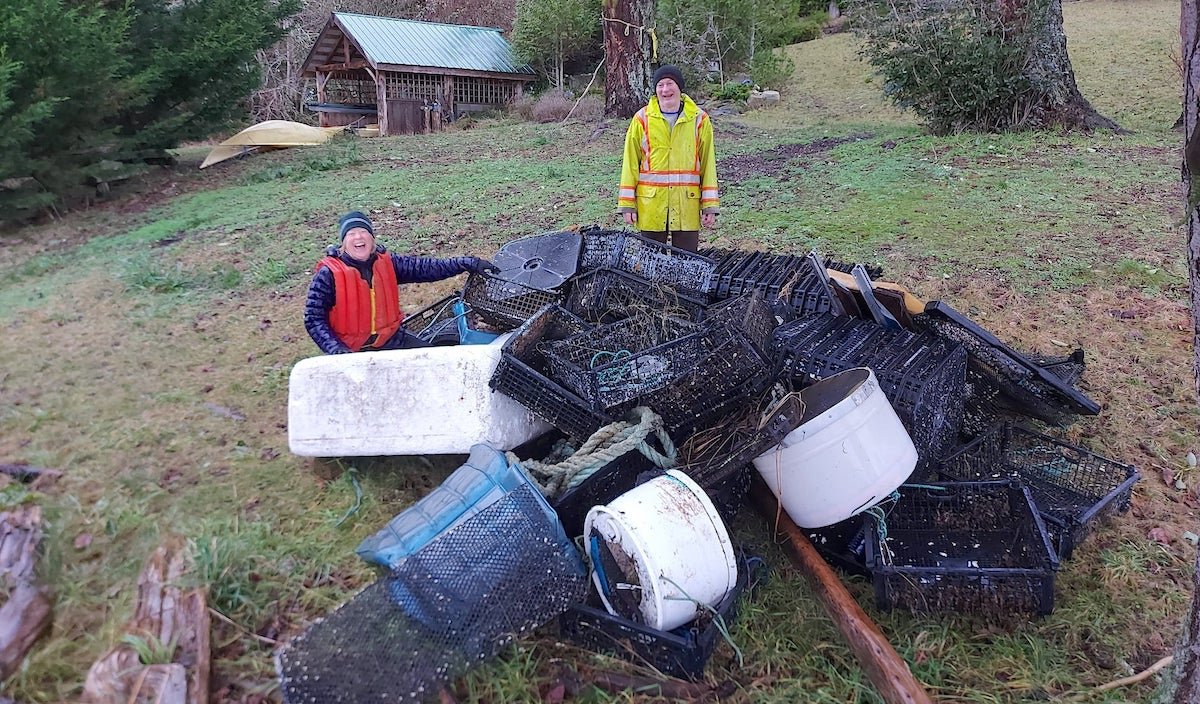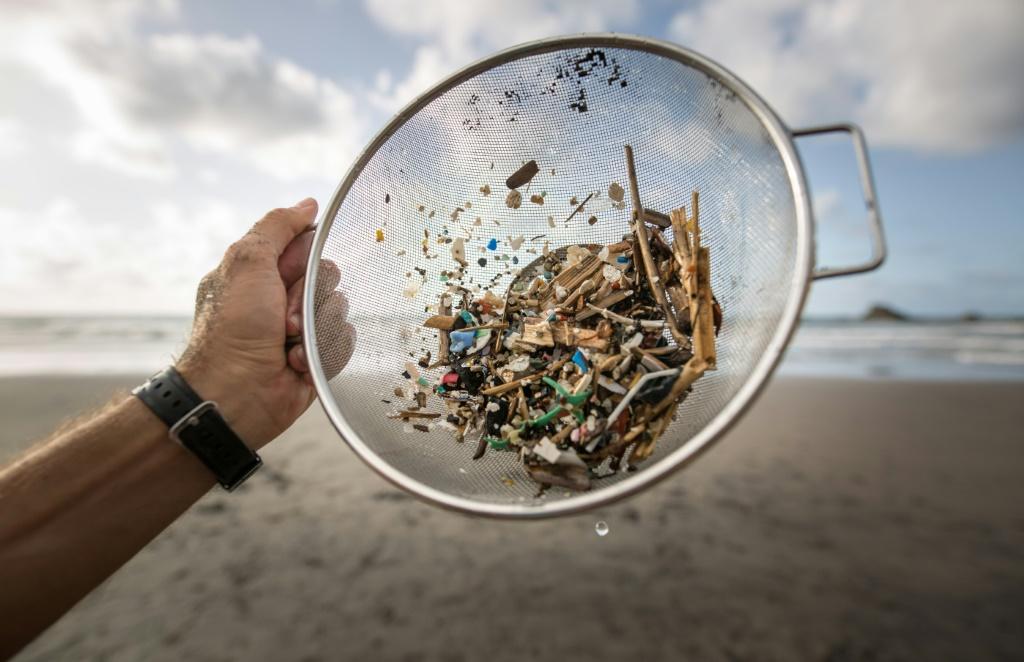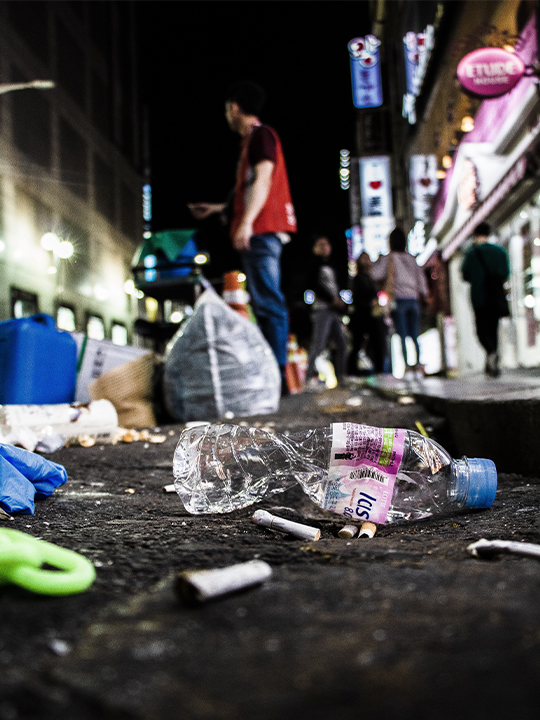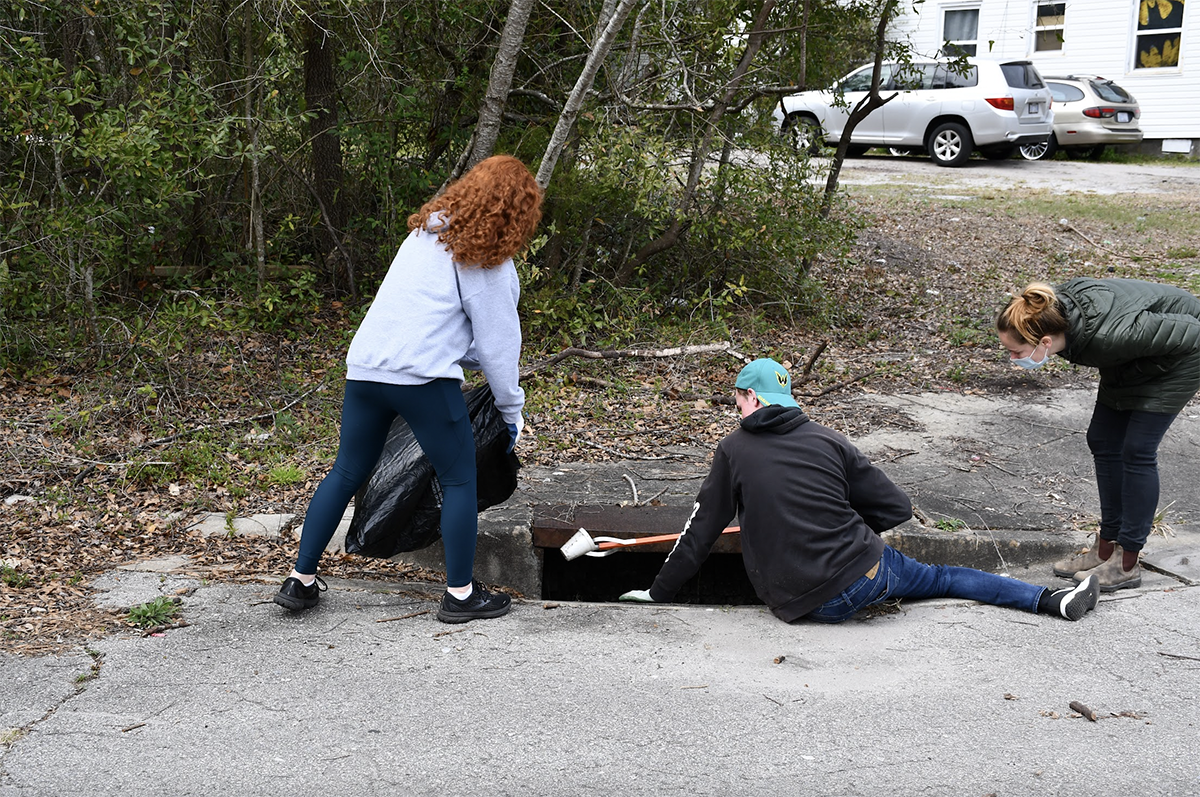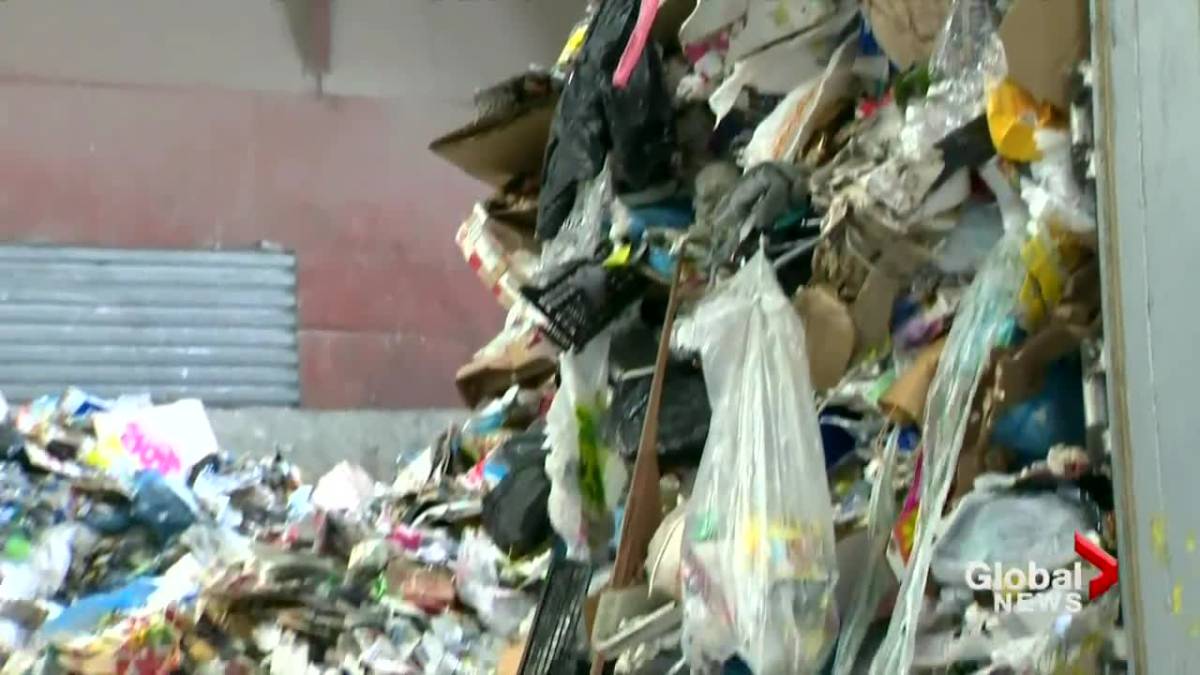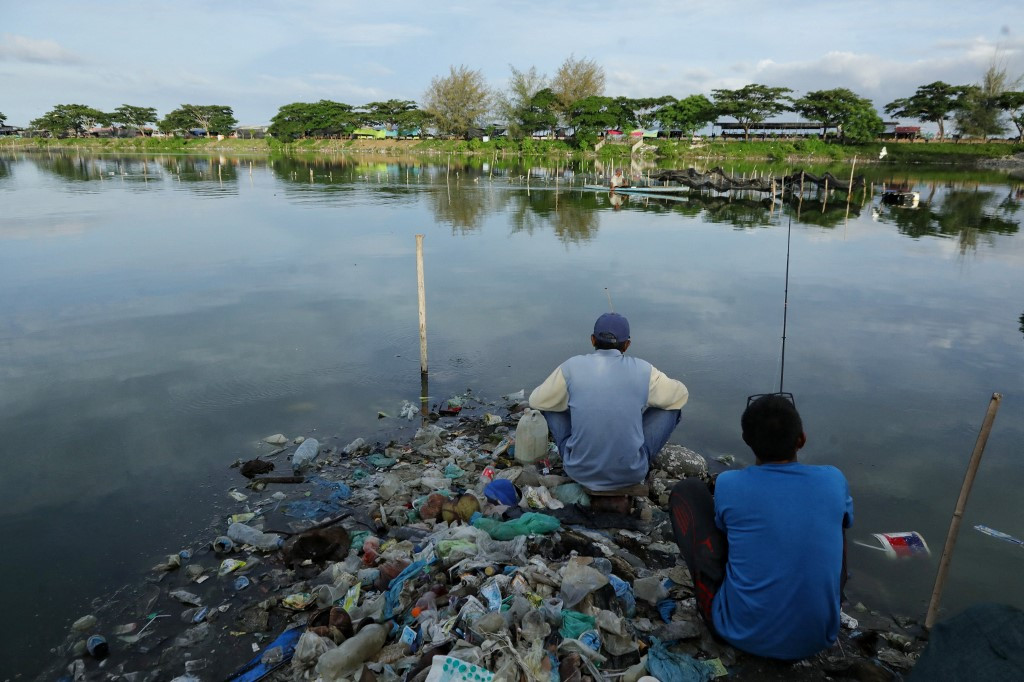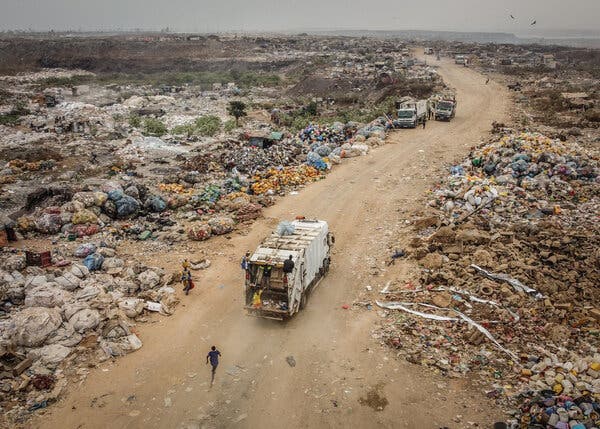After years of largely neglecting the buildup of plastic waste in Earth’s environment, the U.N. Environment Assembly will meet in February and March in the hopes of drafting the first international treaty controlling global plastics pollution.Discarded plastic is currently killing marine life, threatening food security, contributing to climate change, damaging economies, and dissolving into microplastics that contaminate land, water, the atmosphere and even the human bloodstream.The U.N. parties will debate how comprehensive the treaty they write will be: Should it, for example, protect just the oceans or the whole planet? Should it focus mainly on reuse/recycling, or control plastics manufacture and every step of the supply chain and waste stream?The U.S. has changed its position from opposition to such a treaty under President Donald Trump, to support under President Joe Biden, but has yet to articulate exactly what it wants in an agreement. While environmental NGOs are pushing for a comprehensive treaty, plastics companies, who say they support regulation, likely will want to limit the treaty’s scope. At the end of February, the United Nations Environment Assembly (UNEA) will tackle a challenging task: the creation of a landmark treaty to control plastic pollution worldwide. While most nations have agreed to participate, the scope and timing of such an agreement aren’t settled, with many countries, environmental NGOs, and the plastics industry expressing widely different ideas as to what should be included.
But with media images rife of the Great Pacific Garbage Patch, and of the world’s most remote seaside beaches drowning in waste, just about everyone agrees it’s time to act: “The ever-increasing growth in the amount of plastics produced has led to a significant plastic waste generation [problem] that has outpaced society’s ability to manage it effectively,” a U.N. baseline report warned in 2020.
Tallying all sources, “Worldwide, at least 8.8 million metric tons of plastic waste enter the world’s oceans each year — the equivalent of dumping a garbage truck of plastic into the sea every minute,” concluded a key report by the U.S. National Academy of Sciences (NAS) released in December. In 2016, the U.S. generated more plastic waste than any other country, exceeding that of all European Union (EU) member states combined, the report stated.
Discarded plastic waste on a city street. At least 8.8 million metric tons of plastic waste enter the world’s oceans each year — the equivalent of dumping a garbage truck of plastic into the sea every minute, according to the U.S. National Academy of Sciences. Image by Justin Bautista via Unsplash.
The U.S. Congress commissioned that NAS study, which suggested that the United States establish a national strategy to cope with plastic waste by the end of 2022, with an assessment of progress by the end of 2025. The U.S. currently lags behind the EU and Canada in setting plastic environmental guidelines, acknowledges Margaret Spring, who chaired the academy committee that produced the report. China banned plastic waste imports in 2018 and set a plan to phase out certain plastics by 2025.
While the NAS study relied on U.S. federal data to reach its conclusions and focused on oceans, its experts agree that the plastics problem extends well beyond Earth’s seas, and that any initiative aimed at controlling plastic waste must be based on a global methodology and cooperation in order to succeed.
Figures differ as to which nations pollute the most with plastics, depending on whether production or use is counted, or whether the EU is considered as one entity. China, for instance, accounts for about 30% of plastic production, but only about 20% of global use. Globally, most plastics are manufactured and used in China, Western Europe and the U.S.
“This [NAS] report synthesizes what knowledgeable people already knew,” Spring said. She added: “What haven’t been set [to date] are global goals,” something that a U.N. plastics treaty should address.
How much single-use plastic waste do countries generate? Single-use plastic waste generated per person in selected countries in 2019 in kilograms. Image courtesy of Statista.
A runaway plastics crisis
Estimates vary, but U.N. figures assert that humanity uses 500 billion plastic bags and 17 million plastic oil barrels annually. Some 13 million metric tons of plastic wind up in the oceans every year, and plastic kills 100,000 marine animals annually.
Another U.N. report, released in October, warned that “plastic production has risen exponentially in the last decades. It now amounts to some 400 million tonnes per year. Yet only an estimated 12% of plastics produced have been incinerated and only an estimated 9% have been recycled. The remainder has either been disposed of in landfills or released into the environment, including the oceans. Without meaningful action, flows of plastic waste into aquatic ecosystems are expected to nearly triple from around 11 million tonnes in 2016 to around 29 million tonnes in 2040.”
According to a 2019 report from the Center for International Environmental Law, all this plastic is also contributing heavily to climate change. “At current levels, greenhouse gas emissions from the plastic lifecycle threaten the ability of the global community to keep global temperature rise below 1.5°C [2.7°F]. With the petrochemical and plastic industries planning a massive expansion in production, the problem is on track to get much worse,” says the report.
Nations aside, it’s hard to know which of the world’s companies generate the most discarded plastic. Break Free from Plastic (BFP), an NGO and self-described “global movement envisioning a future free from plastic pollution,” releases an annual estimate based on pieces of trash volunteers collect that can be identified with a specific company. By that measure, junk food packaging is a huge part of the problem, with top polluters at last count being Coca-Cola, PepsiCo, Unilever, Nestlé, and Proctor & Gamble.
But the BFP estimate — even though it accounts for brand-name trash in 45 countries — is clearly just that, as it only tallies identifiable garbage that can be found, not what ends up in landfills, incinerators, or bodies of water, such as monofilament and bits of fishing nets. Nor do the rankings consider plastic manufacturers. (Full disclosure: This story’s author holds retirement account stock in the Coca-Cola Company.)
Plastic pollution and juvenile fish in Indonesia. Plastic waste ingested by, or entangled around, aquatic life, is often fatal. Sea turtles, for example, can mistake plastic bags for edible jellyfish. Research suggests that 52% of the world’s turtles have eaten plastic waste, according to WWF. Image by Naja Bertolt Jensen via Unsplash.
Discarded plastic, ranging from food containers to fishing gear, is washing up on shores around the globe, getting eaten by marine life, interfering with navigation, and dissolving into microplastic waste that works its way up the food chain and even into the atmosphere where it may be influencing climate change.
“Plastic pollution can now be found everywhere, from the remote shores of the Arctic to the deepest parts of the ocean. Up to 12 million tonnes of plastic leak into the marine environment annually, harming biodiversity and posing a threat to food security, sustainability and human health,” the Environmental Investigation Agency reported in 2020.
A U.N. Environment Programme (UNEP) report issued last October cited the urgent need for a waste treaty. “Plastics are the largest, most harmful and most persistent fraction of marine litter, accounting for at least 85% of total marine waste,” it noted, adding that, “while we have the know-how [to dispose of plastics properly], we need the political will and urgent action by government to tackle the mounting crisis.”
Tropical paradise? A beach cluttered with waste. Unseen are microplastics mingled with sand, which could have a variety of as-yet-unforeseen impacts. Research is underway, for example, to determine whether microplastics mingled with sand could be raising sea turtle nesting beach temperatures. Because the sex of sea turtles is temperature dependent, more females are hatching as global warming (and possibly microplastics) push temperatures higher on the world’s nesting beaches. Today, females outnumber males three to one at many global sites. Image by Dustin Woodhouse via Unsplash.
Challenging negotiations ahead
The UNEA, founded in 2014, meets biennially in Nairobi, Kenya. At previous UNEA assemblies, delegates debated the need for an international plastics agreement but couldn’t agree on a way forward. But international momentum got a big boost in 2019 when the Nordic Council — an association of parliaments from Denmark, Finland, Iceland, Norway, Sweden, the Faroe Islands, Greenland and Åland, an autonomous region in Finland — called for creating such an agreement.
As a result, featured prominently on the docket for this year’s assembly, slated to run from Feb. 28 to March 2, is the development of a framework for the world’s first ever plastics treaty. The assembly will focus especially on what should be included — and not included.
Past negotiated U.N. environmental treaties cover everything from transboundary air pollution to international transport of hazardous waste (including plastics) and industrial accidents — but they may not provide much groundwork for the plastics treaty process. “None of the existing treaties, each of which has its own specific focus, is a suitable basis for the comprehensive discussions which are necessary to contain and combat the plastic soup,” according to the Plastic Soup Foundation, an Amsterdam-based NGO dedicated to keeping the world’s waters free of plastic.
The UNEA will be considering two competing drafts to arrive at a framework. A more comprehensive one, sponsored by Rwanda and Peru, would try to cope with plastics pollution worldwide from production to disposal. The other, sponsored by Japan, focuses narrowly on oceans and end-of-use.
As representatives of the world’s nations gather this month, plastic manufacturers and oil companies (which provide the petroleum-based raw materials to make plastics), will be taking an interest and want to participate in hopes of influencing outcomes.
Plastic heaped beside a river. Much of this waste will likely be transported downstream into estuaries and oceans where over time it could degrade into microplastics, whose environmental impacts we have only begun to investigate. Image by Alexander Schimmeck via Unsplash.
The plastics industry seems willing to support an accord — so long as it doesn’t interfere too much with business. The Washington, D.C.-based Plastics Industry Association gave Mongabay a statement reading in part: “We support international cooperation to eliminate plastic leakage into the environment. We encourage solutions that are flexible and relevant to regional context and treat the plastics industry as experts and partners. We caution against heavy-handed restrictions that impede the ability of materials to flow around the world, especially in a time of stressed supply chains. Furthermore, we believe that production or consumption limits on plastics is the wrong approach and would encourage the use of products that are inferior from a performance or sustainability profile and result in major economic harm globally.”
Joshua Baca, vice president of plastics for the American Chemistry Council (ACC), a lobbying group that represents plastic manufacturers, also provided Mongabay with a statement, writing that “ACC fully supports the negotiation of a treaty to eliminate plastic waste and accelerate the transition to a more circular economy.” Last September, ACC, along with the International Council of Chemical Associations and the World Plastics Council, agreed on a series of principles for an agreement, including national “flexibility and support” to meet individual nations’ needs, improve “access to waste collection,” and innovate design and recycling.
ACC got part of its wish in December 2020 when the U.S. Congress passed the Save Our Seas Act 2.0, a follow-up on legislation passed in 2018 to protect oceans from plastic waste. Corporations didn’t oppose the bill and President Donald Trump signed it, as it didn’t regulate industry but merely called for more government-sponsored research into recycling, reuse, and making less hazardous products. (Not surprisingly, industry was glad to let the government pay for research rather than spend its own money for that purpose.)
Congress, meanwhile, has not acted on the Break Free from Plastic Pollution Act introduced in the current and previous legislative sessions. That bill would put limits on single-use plastic production and add requirements for reuse and recycling.
The World Wildlife Fund (WWF) suggested in 2020 that a “UN treaty on plastic pollution would benefit businesses as well as the environment. It can create a level playing field across the plastic value chain,” largely by standardizing compliance costs and activities, the NGO suggested.
Plastic in the world: Plastic production by region in 2019 (in percent). Image courtesy of Statista.
The parties prepare
The European Union and 48 countries signed on to an agreement at a ministerial conference last September endorsing the need for a plastics control treaty, stating: “no country can adequately address the various aspects of this challenge alone; hence there is a need to commit to establishing a balanced framework for international cooperation that includes coordinated actions to address the negative impacts of plastic along its life cycle, [and] taking into account local and national circumstances as well as specific needs of developing countries.” At last count, 81 nations have signed on including the U.K. and all EU members, but not the U.S. or China. And according to the WWF Global Plastic Navigator, 161 countries have expressed interest.
Though the U.S. hasn’t signed this U.N. document, the administration of President Joe Biden has agreed to participate in the treaty creation, reversing the Trump administration’s position. (Before the change in presidents, the U.S., one of the biggest plastics polluters, was one of the few countries to actively oppose regulation, which helped set back the international negotiating process.)
One reason for Biden’s delayed signature, and the administration’s failure as of mid-January 2022 to articulate a global plastics control policy: it’s complicated. Twelve federal agencies play a role in determining the U.S. position, ranging from the State Department to the Environmental Protection Agency and the National Oceanic and Atmospheric Administration.
The State Department said in a statement to Mongabay that it “is premature to discuss” matters such as the U.S. position on enforcement, or the degree to which an accord should focus on ocean or all plastic pollution. But the statement indicated the U.S. wants some flexibility, saying “We need to be innovative and account for different national circumstances” and “ensure that countries most in need have the financial resources to implement potential solutions.”
The State Department says it is reviewing NAS findings and recommendations, while also indicating that it wants the agreement to consider all aspects of the plastic lifecycle, noting that it wants countries to consider “circular economy approaches that reduce the lifecycle impacts of plastic” and that some nations “may include restrictions on plastic production and consumption.”
A reminder to modern urbanites: The massive amounts of plastic waste we discard today will live on in the environment for centuries. Image by Jon Tyson on Unsplash.
In a January blog post, Monica Medina, assistant secretary for the department’s Bureau of Oceans and International Environmental and Scientific Affairs, listed her four priorities for that bureau, including “seeking global solutions to address the onslaught of plastic pollution that spills into our waterways and oceans and harms biodiversity.”
Many international environmental groups are pushing hard for a tough U.S. stance. “We’ve been convincing hundreds of governments, corporations, NGOs and other stakeholders to try to move the conversation forward,” said John Hocevar, oceans campaign director at Greenpeace USA. “We’ve also been putting a little bit of public pressure on the Biden Administration to get it to campaign about the global threat.
“We need corporations to take responsibility for what they sell and produce and [make] a shift away from single use plastic and a move to reuse,” Hocevar said. “Governments have not done their job to regulate corporations.”
Whatever the UNEA decides in the coming months, “one good thing about the treaty is that it’s a wake-up call for corporations and governments. They all can see the change that is coming. It should prompt them to start taking action now. There’s no reason to wait until we have a treaty adopted to begin working on solutions,” Hocevar said.
A pile of single-use plastic water bottles found during a beach cleanup in Barbados. While cleanup efforts like this one are well intended, and offer good publicity bringing awareness to the problem, they can’t stem the tide of plastic pollution. That must be done at the source and along supply chains. Image by Brian Yurasits via Unsplash.
Plastic waste generation per person, 2010. Image courtesy of Our World in Data.
Hard work ahead
What can we expect of the upcoming U.N. session? What comes after? The immediate goal will be the formation of an intergovernmental negotiating committee to develop a treaty draft.
“I am confident that member states will decide on the path forward that makes a real difference,” UNEP executive director Inger Andersen said in a statement to Mongabay. The goal, she says, is to finalize the treaty language at the next UNEA general session in 2024. “This would make for a highly ambitious timeframe, reflecting member states’ understanding of the urgency to make progress on this critical environmental challenge.”
Andersen says member states will still need to hash out the degree to which the treaty will focus on oceans or worldwide dumping and how to finance the agreement. But she contends it will need to cover the entire plastic lifecycle “from production through disposal and reduction of the leakage of existing plastic currently in the global ecosystem.”
Asked about the risk that nations may underestimate their disposal, she replied, “This is an important issue for member states to deliberate further on.” Nations have expressed “reporting fatigue” on other multilateral environmental agreements, “and this is something we do need to seriously keep in mind as we assess the optimum review process.”
A landfill in Dhaka, Bangladesh. “The ever-increasing growth in the amount of plastics produced has led to a significant plastic waste generation [problem] that has outpaced society’s ability to manage it effectively,” a U.N. baseline report warned in 2020. Image by MARUF_RAHMAN via Pixabay.
Existing international agreements can provide some guidance on matters of enforcement and reporting. But the accord should emphasize convincing nations that their best interests revolve around “a new global plastics circular economy” and switch the emphasis “from enforcement to creating an enabling environment where it is in everyone’s interests to implement the agreement,” Andersen said.
The U.S. and other countries seem intent on the need to act fast and decisively. The State Department, writing to Mongabay, said: “This is an urgent issue that needs urgent attention. We cannot spend years negotiating. We support establishing an Intergovernmental Negotiating Committee at UNEA 5.2 [the upcoming February-March meeting], and concluding the negotiations by 2024, which may be in line with the yet to be scheduled UNEA 6 target in both current proposed [Japan and Peru/Rwanda] resolutions.” Time is of the essence, as the tide of global plastics pollution rises ever higher.
Banner image: Some 13 million metric tons of plastic wind up in the oceans every year, and plastic kills 100,000 marine animals annually. Image by Tim Mossholder via Unsplash.
FEEDBACK: Use this form to send a message to the author of this post. If you want to post a public comment, you can do that at the bottom of the page.
Chemicals, Climate Change, Environment, Environmental Policy, Featured, Global Environmental Crisis, Green, Health, Impact Of Climate Change, Microplastics, Nature And Health, Ocean Crisis, Oceans, Plastic, Pollution, Public Health, Research, Sustainable Development, United Nations, Waste, Water Pollution
Print

